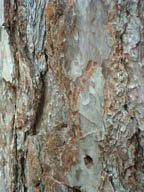painting styles - should you have a style?
one of the Time and Tide series - about changing weather, time, season, tide and light at the beach copyright Vivien Blackburn
Katherine's post today is very interesting and is a subject that matters to me individually and as a teacher in adult/higher education. http://makingamark.blogspot.com/ she talks today about artists developing a style.
Students often talk about finding their style and I tell them it'll happen. It's like your handwriting, it's unique as long as you let it evolve without forcing it and stylising it like calligraphy.
Whilst it's important for your work to be cohesive, it needs to be cohesive because it's your voice coming through and not because you have decided to be - for instance - cubist, or to churn out cutesy little cottages with orange lights in the windows (now who could that be? >:>) )
Great artists develop over time and often work through many 'styles' which are simply aspects of their development, a strengthening of their skills, exploring issues such as light or movement.
Monet and the Impressionists early work was relatively tight but evolved to the dazzling abstraction of Monet's waterlilies over time. He became focussed on the issues that interested him, the effect of light and how somtimes things just dissolve in light as they do in Turners paintings, which he loved.
Giacomo Balla was interested in showing movement, his woman walking a dog is a lovely dynamic little work.
Cubism isn't about pattern but about multiple viewpoints of the same object - a challenge that Braque and Picasso worked through. How to show multiple views and create a cohesive finished work? how to say more about something than one viewpoint can?
None were interested in creating a 'style' but interested in the the subject - light or movement or muliple viewpoints.
David Prentice (link on the right in my links column) paints in the Malvern Hills - he works daily plein air, sketching. These are representational, loose and keenly observed, fairly traditional. Then in the studio he does beautiful big abstracted canvasses and pastels in heightened colours. These introduce the element of time, of weather systems passing and take a more aerial view than is possible in reality. It's these issues that the paintings are about and the colour and marks serve to enable this. He has experimented with mirrors in his canvasses, set at angle with canvasses that are folded and shaped - not getting stale and formulaic but constantly thinking and pushing and experimenting and taking risks. With these your view of the painting changed as you walked by and different elements were reflected - they were really interesting but actually I preferred the canvasses without.
To develop 'style' you need to know what it is you want to say with your painting/drawing. What is it that made you want to paint the subject? the light? the drama or mood? the sense of place? what sort of mood are you creating? peaceful, dynamic, lonely, busy? Holding these thoughts as you work will influence the kind of marks you make, the colours you choose, the medium - and your 'style' will evolve :)
These long thin canvasses in the Time and Tide series were done, not as a stylistic thing, but to work together as a group, adding to the feeling of time passing, time of day and season changing, the tide coming in and going out , the light, colour and weather changing - and hopefully a sense of being there, seeing these things.
Don't try to work in the style of another artist - it's like walking in someone else's shoes :) not comfortable! take elements of information and technique from lots of sources and then make it your own. If your work isn't like other peoples - great! it means you have your own voice :)
Artists who have influenced me are varied - certainly late Monet and Turner sketches for their wonderful way of painting light itself, Schiele for his wonderful incisive flowing lines, the subtlety of Gwen John, the drawings of Van Gogh, the Expressionists for colour and drama, Degas for his wonderful drawing and off beat compositions, Toulouse Lautrec for incisive drawings and characters, Rembrandt for his insight and free use of paint, Caravaggio for chiaroscuro and drama and characters and so many more - all of them very different but all with something in particular that draws me to them and elements I'd like in my own work in my own way.
so .... what do you think? do you agree? disagree? what are your influences? do you have a style?




Comments
I've got some drawings of Van Gogh in my next post!
That's so well said Vivien!
I am at a point where I think a lot about 'my style' - but decided to relax, keep painting what's important to me, enjoy experimenting and see where this leads me - the journey is the reward!
Still I keep the idea of building a body of work very much present, so hopefully my style will develop over time.
check it out everyone!
Thanks regula - do be true to yourself - then you'll be unique, a one off instead of a copy of someone else or a formula :) your style will develop for sure, it just happens as you grow to know what interests you and what succeeds in expressing what you want :)